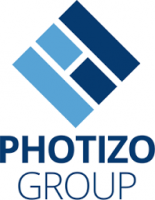 The analysts have launched the report, which questions whether the deal is “checkmate or castle” for the two OEMs.
The analysts have launched the report, which questions whether the deal is “checkmate or castle” for the two OEMs.
American Printer reported on the new analysis from Photizo Group, with the 54-page report available for $499 (€455) and studying the “industry impact” of HP Inc’s acquisition of Samsung’s printer business. The report is said to start by looking at “possible reasons” that Samsung decided to sell, “given that it is a known fact that printers were very strategic to them and they set very ambitious goals to become a leader in the market”.
In turn, Samsung’s current share of five percent of the printer market, alongside “economic conditions in South Korea” and its “costly problems” with the Galaxy Note 7 smartphone are “discussed in detail as possible reasons for selling”. It then moves on to examine “possible reasons why HP decided to purchase”, including “laser technology access, 6,500 laser and inkjet technology patents, [and] access to 1,300 skilled hardware, software and firmware engineers”.
Other reasons include a “production facility in Seoul” as well as “incremental revenue and profits from the Samsung product line to at least partially offset most recent declines in HP’s printer revenue and profits”. Questioning whether the acquisition will succeed or not, Photizo states that HP Inc “has a good track record of acquiring printer companies and successfully growing those businesses, especially when they are allowed to operate a bit independently”.
It gives the example of the OEM’s acquisition of Indigo in 2001 as a “great” instance of a business “that successfully grew after being acquired by HP”, and also “addresses the challenges that HP will face”, such as “how to integrate the Samsung product line into the HP product line, particularly from a channel standpoint”.
With 16 A3 laser MFPs launched as part of the deal, Photizo notes that 13 “are based on Samsung print engines”, while six “low-end monochrome single function and multifunction” launched in early October are “based on Canon, not Samsung printer engines”, and the analysts said the report aims to discuss “how much the Samsung A3 product line, at least what exists today, will help HP’s efforts to break into the copier/BTA channel especially given the positioning of HP’s PageWide A3 products”.
The report moves on to address the “impact” of the deal on the industry, including the “balance of power between two market leaders” in Canon and HP Inc, which has “now shifted in the favour of HP” now it’s “acquired a laser printer product line and laser/inkjet-related patents”, and with HP Inc’s “product breadth” as “broad or perhaps broader than Canon’s”, and its A4 and PageWide A3 products “expected to be very disruptive in terms of price/performance”.
This could be “more so against established A3 laser MFP providers including Canon”, and Photizo asks whether HP Inc will “continue to purchase print engines from Canon after the latest round of low-end products announced” in October, “now that they have their own laser technology”. The report concludes with a “long list of answers to many questions that were asked during the two webinars” that followed the deal, though it “could not answer all”.
